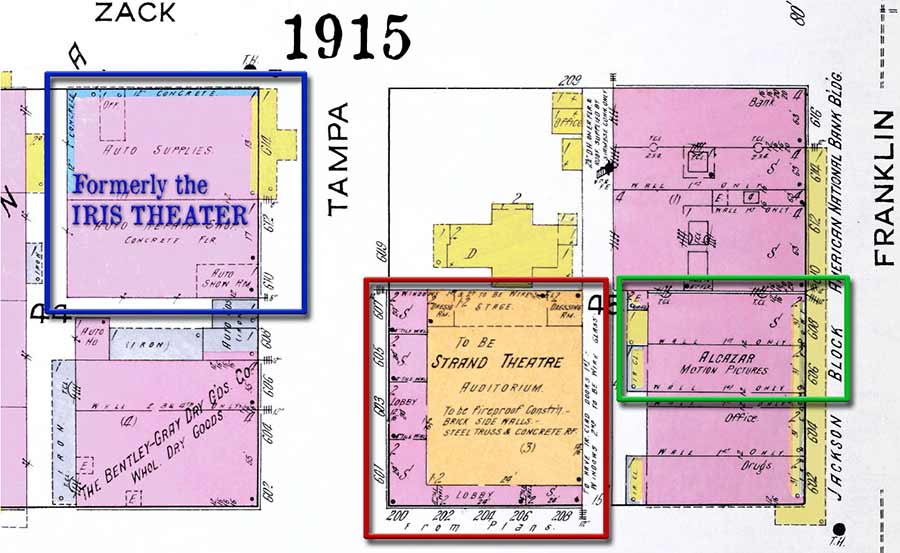|
THE GREESON THEATER, TAMPA'S FIRST HIGH-CAPACITY ELABORATE THEATER
Feb.
25, 1926 - By this
time the Greeson was
no longer being used
as a theater. The Greeson Theater was located on the 200 block of Jackson St. It can be seen below to the left of the Bay View Hotel, with Jackson St. running along the right and Tampa St. to the left. By this time it was no longer being used as a theater.
Plans to build the Greeson were announced in the summer of 1909 by Emmett M. Greeson, a prominent Tampa businessman and former Tampa City Council member. It was Tampa's first large, elaborate theater at an expenditure of about $50,000. No expense was spared in its construction and furnishings, seating well over 1,000 patrons comforatably. Chelso Peruchi, owner of a local acting company, planned to lease the theater for 10 years.
The theater opened on June 9, 1910 to much fanfare, with its premier performance of "In the Palace of the King."
CLICK HERE TO READ THE REST OF THIS ARTICLE
A DETAILED
DESCRIPTION OF THE
GREESON:
THE GREESON IN 1915 The Greeson is labeled as "Tampa Theatre" with the entrance to the theater seen on the north end of the building as a stairway on the first floor. The auditorium occupied the 2nd & 3rd floors with the stage on the south end. The first floor consisted of an automobile sales room with the rest of the first floor occupied by a wholesale paper business. The notations that look like musical notes are fire escapes.
THE STRAND THEATER OPENS The opening of the Strand in June 1915 probably drew crowds from the Greeson leading to its final curtain call.
CONVERTED FOR AUTOMOTIVE INDUSTRY As "fine" a structure as it was, by 1920 it had been converted for use in the automotive industry. The Greeson was bought by W. W. Jones and used by Ben H. Hill who had converted it into three floors of his automobile business, selling is "Cole 8" and "Velie 6" cars. The first floor was elegantly fitted and furnished for sales rooms and offices, with the parts room behind the office out of view. The 2nd floor, formerly the auditorium. contained repair rooms measuring 100 x 70 feet, and the 3rd floor paint shops, as well as storage for cars. Cars could drive directly to the third floor through the entrance seen on the right against the Bay View Hotel.
JONES SELLS TO HENSLEY
Feb.
25, 1926 - CROP OF
FIRST PHOTO.
WHO WAS E. M. GREESON?
From "Memoirs of
Florida: Embracing a
General History of
the Province,
Territory and
State...etc. at
Google Books.
|
||||||||||||||||


















